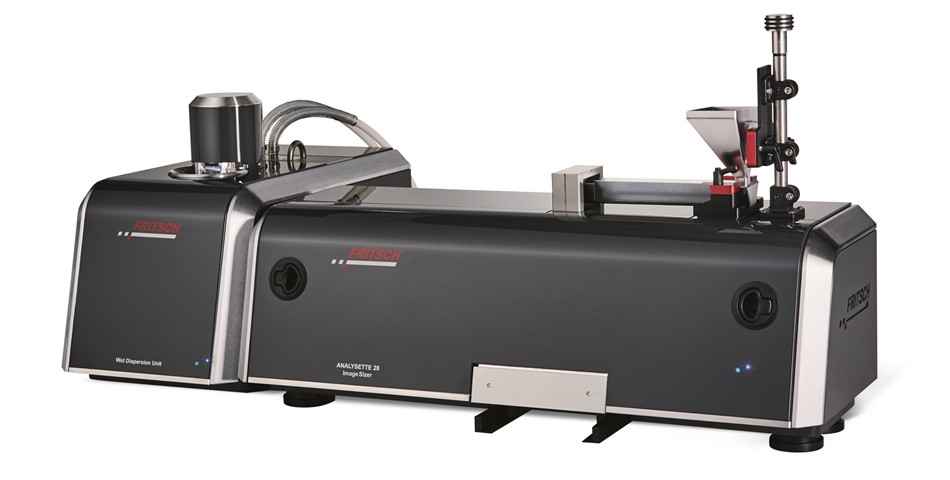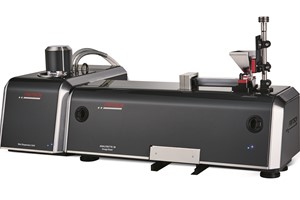Dynamic Image Analysis is a perfect method to utilize if not only the particle size of powders is to be determined, but if you also want to ascertain information about their shape. For this purpose the FRITSCH GmbH provides a functional, economically priced instrument, the Particle Sizer ANALYSETTE 28 ImageSizer, which allows dry measurements of free-flowing powders and bulk solids as well as supports measurements with a wet dispersion unit.
The underlying measuring principle is quickly explained: A directed flow of particles passes in front of a large scale LED flash and the particles are photographed in back light in fast sequences by a digital camera. Therefore, the optical set-up is comparable with transmitted light microscopy, where a high contrast is obtained between the homogeneously lit, light background and the particles shadowing the light. All images are then analysed via software and the corresponding selected data is displayed after the completion of the measurement. More about this later though.
Let’s dwell on the optical set up though: As with every microscope or common camera, the size of the generated image on the retina or camera sensor depends on the magnification performance of the utilised lens.
For a certain combination of camera and lens, yield from the magnification and the sensor parameters (overall size and pixel size), the limits of this obtainable size range. Inside the ANALYSETTE 28 ImageSizer, runs a 5 mega pixel camera with a 2/3 inch CMOS sensor. The pixel size is 3.45 µm, which in combination with a lens magnification of 0.35 times, results in a lens size of 10 µm per pixel.
Now, if for the lower measuring range of the system, images of particles of at least 8 x 8 pixels are required, a lower measuring range of 80 µm is obtained. Through similar deliberations, the upper measuring range of 10 mm is achieved in this combination, i.e. with this combination of camera and lens the particle size range of at least 80 to 10000 µm is covered.
Until now we assumed a constant magnification factor. But this is only possible with regular camera lenses if the distance of the camera to the particle is always identical. If the distance changes the detected particle size is falsified on the same scale. Since in practice it is for the most part impossible to guide the particles exactly on a plane pass the camera, FRITSCH utilizes so-called telecentric lenses here. Unlike with conventional camera lenses, the size of the image generated on the sensor doesn’t depend on the distance between object and camera.














